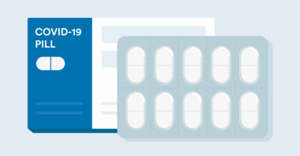Cosmetic Dermatologist
Cosmetic dermatologists offer a wide range of services and treatments that can improve the overall appearance of your skin. Knowing more about the services of a dermatologist versus a cosmetic dermatologist can help you determine which skin care doctor you should see for treatment.
What does a cosmetic dermatologist do?
A cosmetic dermatologist, also known as an aesthetic dermatologist, performs treatments and procedures that focus mainly on enhancing your appearance. According to the Miller School of Medicine in Miami, common dermatologist cosmetic procedures include dermal fillers, Botox, and laser hair removal.
Traditional dermatologists focus more on treating medical issues and health conditions that affect the skin, such as psoriasis, eczema, and skin cancer. In comparison, notes the Miller School of Medicine, cosmetic dermatologists focus on reducing signs of aging and enhancing your appearance in other ways to make you feel more confident about the way you look.
Some people confuse cosmetic dermatology with cosmetology, which are not the same. The difference between a dermatologist and a cosmetologist is that a dermatologist is a skin care doctor who specializes in treating the skin, hair, and nails. In contrast, a cosmetologist specializes in beautifying the skin, hair, and nails, says MTI College. A cosmetologist is not a medical doctor and does not perform medical treatments.
Education and training
A person who wants to become a cosmetic dermatologist must earn a bachelor’s degree with majors in science-based subjects that help them better understand the medical field, reports Windsor University School of Medicine. This is usually followed by four years of medical school, completion of a dermatology residency program, and a one- or two-year fellowship in a cosmetic dermatology subspecialty program, adds the university.
Reasons to see a cosmetic dermatologist
According to the Windsor University School of Medicine, a cosmetic dermatologist can work with you to improve areas of your skin that you feel are unsightly or contributing to an older-looking appearance. In some cases, your skin care doctor may recommend combining one or more treatments to help you achieve your ideal look.
Common treatments
Injectables like Botox and dermal fillers are some of the most common treatments performed by cosmetic dermatologists and can reduce signs of aging like fine lines and wrinkles, reports the Windsor University School of Medicine. Light therapy can reduce skin discoloration and scarring, while laser hair removal can reduce unwanted hair on the face and other areas of the body. Your cosmetic dermatologist can talk to you in more detail about the treatments and services they offer.
Botox
Botox is an injectable treatment that reduces the appearance of fine lines and wrinkles on the forehead and around the eyes. According to Baylor College of Medicine, it works by relaxing muscles in the face that contribute to wrinkling. Botox produces results that last between three and four months. Side effects are usually mild and resolve on their own after a few days.
Dermal fillers
Dermal fillers are injectable treatments that plump up the skin to add volume and definition to areas of your face that may be sagging or drooping. They can also help reduce fine lines, wrinkles, and acne scarring, reports the FDA. The ingredients in dermal fillers can boost hydration in your skin to make it fuller and can also stimulate collagen production to make your skin look younger and softer.
Exfoliating treatments
Exfoliating treatments focus on removing dead skin cells from the surface of your skin to make it look brighter, smoother, and more rejuvenated. According to Saint Louis University, Facial, chemical peels, micro-needling, and microdermabrasion are some of many cosmetic exfoliating treatments.
IPL therapy
“IPL” stands for intense pulsed light. IPL therapy uses several wavelengths of light to improve various types of skin discoloration, reports the University of Utah. Sunspots, age spots, and broken blood vessels are some of the many types of discoloration that can be treated with IPL therapy.
Laser hair removal
Laser hair removal can reduce or remove unwanted hair from areas of the body, including your face, underarms, legs, and bikini area. According to Baylor College of Medicine, the laser used in this treatment emits a small pulse of laser energy to target and destroy pigmented hair follicles. The college adds that most people need up to eight treatment sessions to achieve up to 80% hair loss in targeted areas.
Tattoo removal
Tattoo removal involves a laser that breaks up and disperses the pigment under the skin to make your tattoo nearly invisible, reports the University of Utah. This process usually requires nine to 12 treatment sessions over one year. The university adds that black tattoos are normally more difficult to remove than blue or purple tattoos and may require additional treatment sessions.
Non-invasive fat removal
Non-invasive fat removal treatments like CoolSculpting involve freezing and breaking down excess fat cells so they can be naturally eliminated from the body. According to Baylor College of Medicine, CoolSculpting can be used to target areas with excess fat such as the thighs, upper arms, and neck that don’t respond to diet and exercise.
What to expect at the cosmetic dermatologist
Many times, your cosmetic dermatologist will meet with you before your desired procedure to determine whether you’re an ideal candidate and talk to you about what you hope to accomplish with treatment. During that time, your skin care doctor can talk to you in greater detail about what to expect from treatment, depending on the type of procedure you’re having. Most dermatologist cosmetic procedures take place in an outpatient setting and require no downtime, notes the Baylor College of Medicine.
Find Cosmetic Dermatologist near you
- Alabama
- Alaska
- Arizona
- Arkansas
- California
- Colorado
- Connecticut
- Delaware
- Florida
- Georgia
- Hawaii
- Idaho
- Illinois
- Indiana
- Iowa
- Kansas
- Kentucky
- Louisiana
- Maine
- Maryland
- Massachusetts
- Michigan
- Minnesota
- Mississippi
- Missouri
- Montana
- Nebraska
- Nevada
- New Hampshire
- New Jersey
- New Mexico
- New York
- North Carolina
- North Dakota
- Ohio
- Oklahoma
- Oregon
- Pennsylvania
- Rhode Island
- South Carolina
- South Dakota
- Tennessee
- Texas
- Utah
- Vermont
- Virginia
- Washington
- Washington DC
- West Virginia
- Wisconsin
- Wyoming
Cosmetic Dermatologist FAQs
What is cosmetic dermatology?
Cosmetic dermatology is a specialty field of dermatology that focuses on improving the appearance of the skin, hair, and nails. Dermatologist cosmetic procedures can help reduce signs of aging, remove unwanted hair, and reduce stubborn pockets of excess fat that won’t respond to diet or exercise. Often,the goal of these treatments is to improve your overall appearance and make you feel more confident about the way you look, notes the Windsor School of Medicine.
How can I become a cosmetic dermatologist?
According to the Windsor School of Medicine, you can become a cosmetic dermatologist by earning a bachelor’s degree in science and going to medical school for at least four years. It adds that you must also complete a dermatology residency program and receive one to two years of additional training in cosmetic dermatology.
What do cosmetic dermatologists do?
According to the Windsor School of Medicine, cosmetic dermatologists are trained to do a wide range of aesthetic procedures that can enhance your appearance. Many of these procedures involve reducing signs of aging such as fine lines, wrinkles, and sagging skin and reducing the appearance of blemishes and scarring on the face. They also can reduce areas of excess fat on your body and remove unwanted hair from areas like the face, underarms, and bikini line.
What are common procedures//treatments performed by cosmetic dermatologists?
Botox, dermal fillers, laser hair removal, IPL therapy, tattoo removal, and non-invasive fat removal are some of the many procedures performed by a cosmetic dermatologist. They may also perform chemical peels, micro-needling, and microdermabrasion, adds the Miller School of Medicine. Your cosmetic dermatologist can provide you with a list of procedures and treatments they offer at their medical practice or clinic.
What do fillers do?
Dermal fillers are injectable treatments that can fill in or add volume to areas of your face that may be sagging or drooping, says the FDA. Sagging or drooping on the face can be caused by factors including aging, smoking, and excess sun exposure, notes the FDA. The active ingredient in many dermal fillers is hyaluronic acid, which helps boost moisture in the skin to make it look fuller and younger.
What is physician-grade skincare?
Physician grade skincare refers to skincare products and services that are available only through physicians, reports the University of Southern Florida. These products and services usually contain high-quality and/or highly potent ingredients that are often far more effective than those in many over-the-counter skincare products. The University adds that the efficacy of physician-grade skincare products is backed up by science and peer-reviewed medical studies.
How long does Botox last?
The University of Southern Florida says that results from Botox usually last three to four months. After that period, you may need to see your cosmetic dermatologist regularly for additional treatments to prolong your results and help you maintain a youthful appearance. The Baylor College of Medicine adds that Botox results may last up to one year in some individuals.
Where can I find a cosmetic dermatologist near me?
One easy way to find a cosmetic dermatologist in your area is to type “cosmetic dermatologist near me” into your search engine or use Solv to locate only the highest-rated providers. Solv features a directory of top-rated healthcare providers in your area, so you can choose a quality cosmetic dermatologist and book a same-day or next-day appointment directly from its website.
Solv has strict sourcing guidelines and relies on peer-reviewed studies, academic research institutions, and medical associations. We avoid using tertiary references.
Everyday Healthcare, Simplified
Expert advice to help you live your best life








